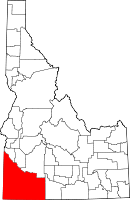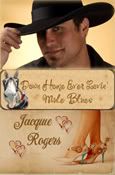Westerners bet on anything that moved--how fast it could go and how high it could jump. They had foot races, boxing matches, flea-jumping contests, frog-jumping contests, bear and bull matches, dog fights, cock fights, as well as cow-boy tournament events such as saddlebronc riding.
But most of all, westerners like to play the ponies: “Gradually, as wealthy men made a hobby or a sideline of breeding horses, Western races became more carefully orchestrated, the crowds grew and betting flourished. Indeed, gambling and a day at the races became a virtually synonymous. And when Westerners got around to staging formal stakes races the prizes were sometimes much richer than those back East. In 1873 what was billed as “The richest race in the world” was run at Ocean View Park in San Francisco. The winner’s purse was $20,000 paid in gold. In the same year New York’s famous Belmont was worth only $5,200 and Maryland’s Preakness a mere $1,800.” [Gamblers of the Old West, p.200]
While horse racing was wildly popular, a close second was boxing. This sport wasn’t exactly the refined version we have today. Boxers wore no gloves and round lasted until one of them was knocked down--and no limit to the number or rounds. As long as both fighters could throw a punch, the match was active. The winner took the purse which could be as much as $10,000.
And of course there were the card and dice games. Professional gamblers in the Old West, the really good ones, were called “thoroughbred gamblers.” I’m listing several thoroughbreds and sources where you can get more information, as well as a few famous gamblers, not necessarily thoroughbreds, but definitely well-known.
George Devol
Mississippi riverboat gambler, born in 1829, who worked the river for 40+ years and made a fortune on 3-card monte, poker, and keno. He wrote a fabulous book,
Forty Years a Gambler on the Mississippi, that I used when I researched a story I wrote a few years back. I've never found anything even close to this book as far as explaining how gambling and conning works. Mr. Devol was probably a charming, rough, genius from a good family who had no idea what to do with such a rambunctious boy. He won and lost many fortunes over the years.
Quoted from
American Gambler Online:
“In the 1850's Elanora Dumont was a sexy young dealer who attracted love-starved players that gladly lost their gold to this expert player. As she grew in popularity so did her earning. Eventually she owned her own casino, "Dumont Palace" which also prospered, because she enjoyed a reputation for fairness and free food. The mustache appeared suddenly well after she'd made her money. Following a busted romance and a worse marriage which left her broke and alone, she poisoned herself 1879.”
Jefferson Randolf “Soapy” Smith
A very colorful character, indeed! Soapy is more in the spirit of con men than traditional gamblers, but his talents certainly can’t be overlooked. He was from Southern gentility and

well-educated as a lawyer.
Originally running a shell game, he graduated to the soap scheme where he wrapped 5-cent bars of soap with either plain paper, or $20, or $100-dollar bills and sold the bars for $5 a piece. Of course, the only people who actually “won” were on Soapy’s payroll.
Always ready to make a buck, Soapy did everything from fixing elections to the more standard job running a poker hall.
While I never did find a biography (book form) of him, you can read more at
http://www.mtnguy.com/owlhoots/smith.htmor
http://www.denvergov.org/AboutDenver/history_char_smith.aspand a little about his Scagway adventures at
http://www.yukonweb.com/business/lost_moose/books/chilkoot/soapy.html.
His death photograph is at
http://www.arcticwebsite.com/SoapyDead.html.
Wyatt EarpEverything has been written about him, but I’m including him because he was a renowned gambler who owned games/saloons throughout the West. Here’s an interesting site about Earp’s life after Tombstone:
http://users.techline.com/nicks/later.htmAnd here’s a more complete biography:
http://www.desertusa.com/mag98/mar/papr/du_earp.htmlPoker Alice (Ivers)
Poker Alice was an amazing woman. Outstanding mathematical ability stood her well throughout the years while she made her way quite nicely through a man’s world.
There’s a really good article about her at
http://www.readthewest.com/billkellyWILDWOMEN08-2002.html.
and another (the year of her birth is different)
http://www.blackhills-info.com/quinn/Pokeralis.htmlHer house in Sturgis, SD:
http://www.star-litemotel.com/pokeralice.htmMartha “Calamity Jane” CanaryHer autobiography:
http://www.blackhills-info.com/calamity_jane/CALAMITY.htmAn article that carefully skirts the gambling issue:
http://adamsmuseumandhouse.org/clmtyjan.htmAnd I love this quote from
http://www.geocities.com/Nashville/1926/gunfighters/calamityjane.html“It takes disaster to bring the woman out in a female, even Calamity, who went around like a saint when the smallpox plague struck Deadwood. She nursed back people close to the door of death and didn't ask for so much as a thank you. Even old Doc Babcock had to admit there was a little angel of some sort in this hardboiled woman, yes, even a little bit of heaven itself when she tended children. ‘oh, she'd swear to beat hell at them,’ said the Doc, ‘but it was a tender kind of cussin'.’ ”
James Butler “Wild Bill” Hickok (1837-1876)Family History (stats) and brief bio:
http://www.ukans.edu/heritage/families/hickok.htmlAn article on his life:
http://www.abacom.com/~jkrause/hickok.htmlHis portrait:
http://adamsmuseumandhouse.org/wildbill.htmWilliam Barclay "Bat" Masterson (1856-1921)A good article on his life although his gambling is not mentioned much:
http://members.aol.com/Gibson0817/bat.htmThis one’s interesting but it, too, skirts his years as a gambler:
http://www.ashrael.com/oldwest/bat.phpHere’s an article that actually has his gambling mentioned!
http://www.ksheritage.org/hist04.htmlAnd there you have a handful of gamblers--not all of them the thoroughbred variety, but well known, nevertheless.
Interesting BooksForty Years a Gambler on the Mississippi, George H. Devol, originally published in 1887 by Devol & Haines, Cincinnati. Republished by Applewood Books, 18 North Road, Bedford, MA, 01730. ISBN 1-55709-110-2. This book is a series of vignettes by Mr. Devol recounting various adventures he had as a Mississippi riverboat gambler.
Gamblers of the Old West, from the Editors of Time-Life Books. ISBN 0-7835-4903-2. This is a terrific book with many fine illustrations the aid in the understanding of gambling in the 19th century. Please bear in mind that the terminology is often modern.
Games You Can’t Lose: A Guide for Sucker$, Harry Anderson and Turk Pipkin, Burford Books, 1989, 2001. ISBN 1-58080-086-6. While certainly not a historical reference, it certainly is an interesting read for anyone who’s writing a con artist character.
Card Control: Practical Methods and Forty Original Card Experiments, Arthur H. Buckley, Dover Publications, Inc., 1993 (first published in 1946), ISBN 0-486-27757-7. Need to deal from the bottom or stack the deck? This book shows you how. Not that I got anything but gales of laughter from my husband and friends when I tried cheating . . . (Remember the manual dexterity requirement?)
Interesting Sites:Gambling in the United States
http://www.library.ca.gov/CRB/97/03/Chapt2.htmlFamous Gamblers:
http://www.casinochecker.com/know/hist/famouspeople.htmWestern slang and phrases:
http://freepages.genealogy.rootsweb.com/~poindexterfamily/OldWestSlang.htmlEnjoy the ride!
Jacquie
Down Home Ever Lovin' Mule Blues (See the
Book Video featuring
Justin Saragueta)
Jacquie Rogers ***
Myspace ***
Twitter ***
FacebookFaery Special Romances ***
Book VideoRoyalties go to
Children's Tumor Foundation, ending Neurofibromatosis through Research

 Chang Er was the wife of Hou Yi who shot down nine of the ten suns that were scorching the earth. As a reward, Hou Yi was given the elixir of immortality for himself and his wife. When villains tried to steal it, they killed Hou Yi, and Chang Er swallowed the elixir so the bad guys wouldn't get it. Turned immortal, she flew to the moon, where she lives to this day. There are many versions of this story, one of the nicest told on Laputan Logic, where links to several other versions are given as well.
Chang Er was the wife of Hou Yi who shot down nine of the ten suns that were scorching the earth. As a reward, Hou Yi was given the elixir of immortality for himself and his wife. When villains tried to steal it, they killed Hou Yi, and Chang Er swallowed the elixir so the bad guys wouldn't get it. Turned immortal, she flew to the moon, where she lives to this day. There are many versions of this story, one of the nicest told on Laputan Logic, where links to several other versions are given as well. the newest legend of the Moon Festival. It is said that in the 14th Century, when the Chinese were ruled by the Mongols and assembly was illegal, that the fomenters of revolution passed their plans and instructions to the people inside moon cakes. On the night of the festival, the people revolted and thus began the Ming Dynasty.
the newest legend of the Moon Festival. It is said that in the 14th Century, when the Chinese were ruled by the Mongols and assembly was illegal, that the fomenters of revolution passed their plans and instructions to the people inside moon cakes. On the night of the festival, the people revolted and thus began the Ming Dynasty.


























